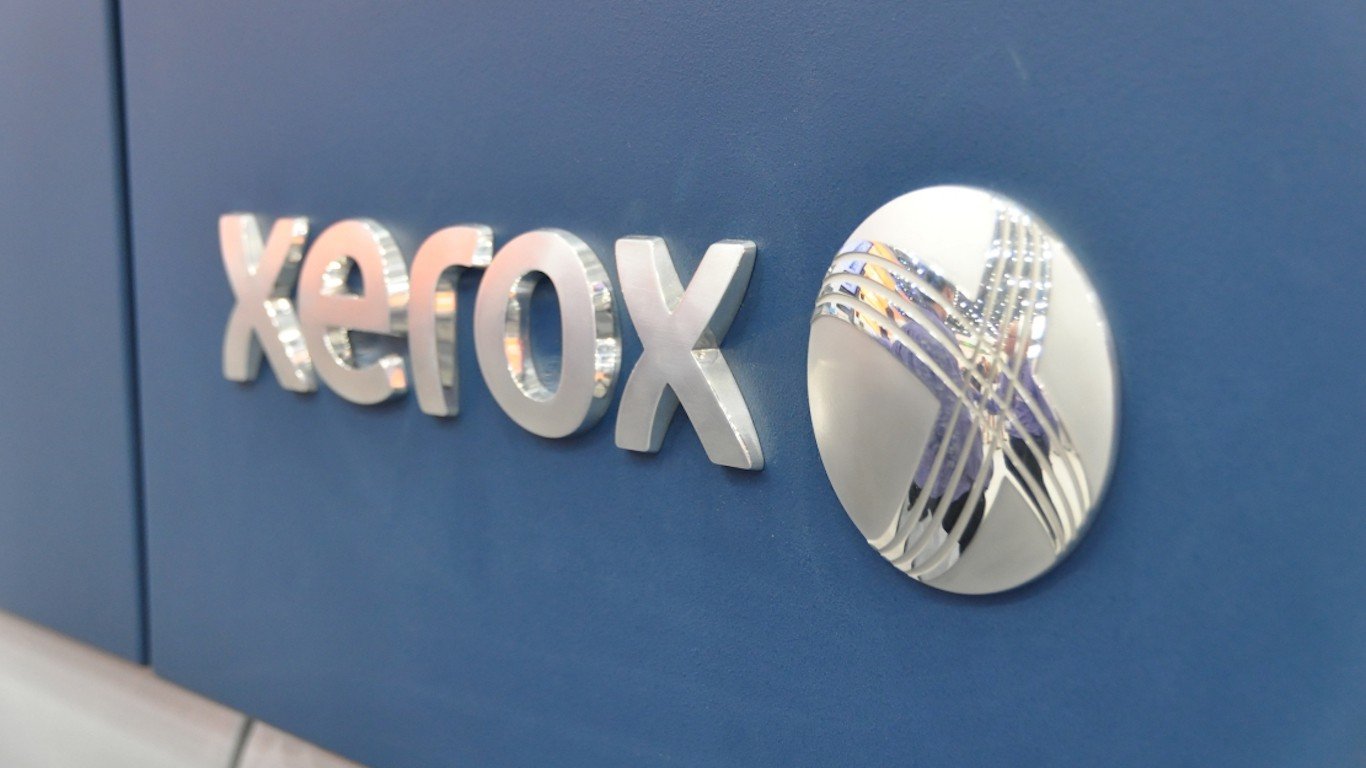Technology
If HP and Xerox Really Want a Merger, Why Not Consider It in Reverse?

Published:
Last Updated:

There has to be some joke about two of America’s oldest technology giants thinking about a merger. The news was confirmed during the week of November 8 that Xerox Corp. (NYSE: XRX) has made a proposal to combine with HP Inc. (NYSE: HPQ). Xerox was ready to offer more than $30 billion for HP. Needless to say, how the smaller Xerox would do a Pac-Man gobble up of HP comes with some serious questions.
These two companies have been involved in other acquisitions over time, as well as divesting, cost cuts and restructurings. The latest move would have an impact on the PC and printer markets, and it might come with a massive debt load.
The investing public has a simple and fair question to ask: To save all this trouble and to prevent a massive debt-load from being forced, if there is so much merit here, why doesn’t HP just bite the bullet and buy Xerox?
Credit ratings agencies and Wall Street analysts are not the last word when it comes to getting a merger done, and companies often are willing to take a short-term credit downgrade for a better position in the future.
A transaction of this sort would be complicated further by the notion that activist investor Carl Icahn owns an 11% stake in Xerox and has a board seat. One issue that might help a transaction along at least a little is that Xerox is expected to receive a check for $2.3 billion from the sale of its 25% stake in its Fuji Xerox joint venture. Reports also indicated that Xerox had an informal funding commitment for the potential HP acquisition.
As far as what the future company might look like to future investors, Xerox and HP’s combined print business would have close to $30 billion in annualized revenues and total revenues of about $70 billion.
A UBS report indicated that consolidation in the printing industry makes sense considering the pressure and the relatively large number of players competing for it. HP was noted as having 40% of the desktop printing, but a much smaller share in networked enterprise printing. Xerox is said to have roughly 15% of the networked printing share by revenues, but still behind Canon and Ricoh.
Toni Sacconaghi, an analyst for Bernstein, opined that perhaps Xerox is actually just trying to force HP into making an offer to acquire the company. Xerox is not investment grade, but HP is, and Xerox likely would have $25 billion or so in net debt. Still, he thinks the $2 billion in combined synergies under a deal that was touted in reports may be a bit high and the deleveraging could take five years or more.
Standard & Poor’s did not take any credit ratings action on the news, but it did issue a note on Friday, indicating that a Xerox move to acquire HP would come with significant debt and would bring downward credit rating pressure on the ratings for both companies.
There already was some evidence that the merger would damage the credit ratings as the deal’s structure looked during the week. The Wall Street Journal reported on Thursday that HP’s bond issue due in 2041 fell about 6% in price, and that Xerox’s maturity in 2039 fell about 5% on the news. HP’s current BBB investment-grade rating is better than Xerox’s BB speculative (junk) rating.
HP’s shares closed up 0.67% at $19.52 on Friday, almost 10% higher than the $17.78 close the prior Friday. Refinitiv’s consensus analyst target price on HP is $19.62, and the shares have a 52-week trading range of $15.93 to $25.49.
Xerox closed up 4.1% at $38.85 a share on Friday, for a gain of 16% from the prior Friday’s close of $33.48. The consensus target price is just $38.00, and shares have traded in a 52-week range of $18.58 to $39.38.
At the heart of the matter, perhaps more than anything else in this equation, is that size does matter. HP’s market cap is about $31.5 billion, and Xerox has a market cap of about $8.6 billion.
Rather than a weaker credit-rating company having to take on $20 billion or so in debt, HP already had close to $5 billion in cash and long-term liabilities of close to $9 billion at the end of its last quarter. With Xerox shares already up close to 90% in 2019 alone, HP might not even have to pay much of a premium since the shares rallied on the news. There is an obvious answer here, and that’s that if the combination really has so much merit, then perhaps HP should leave the future combined company less riddled with debt.
Thank you for reading! Have some feedback for us?
Contact the 24/7 Wall St. editorial team.